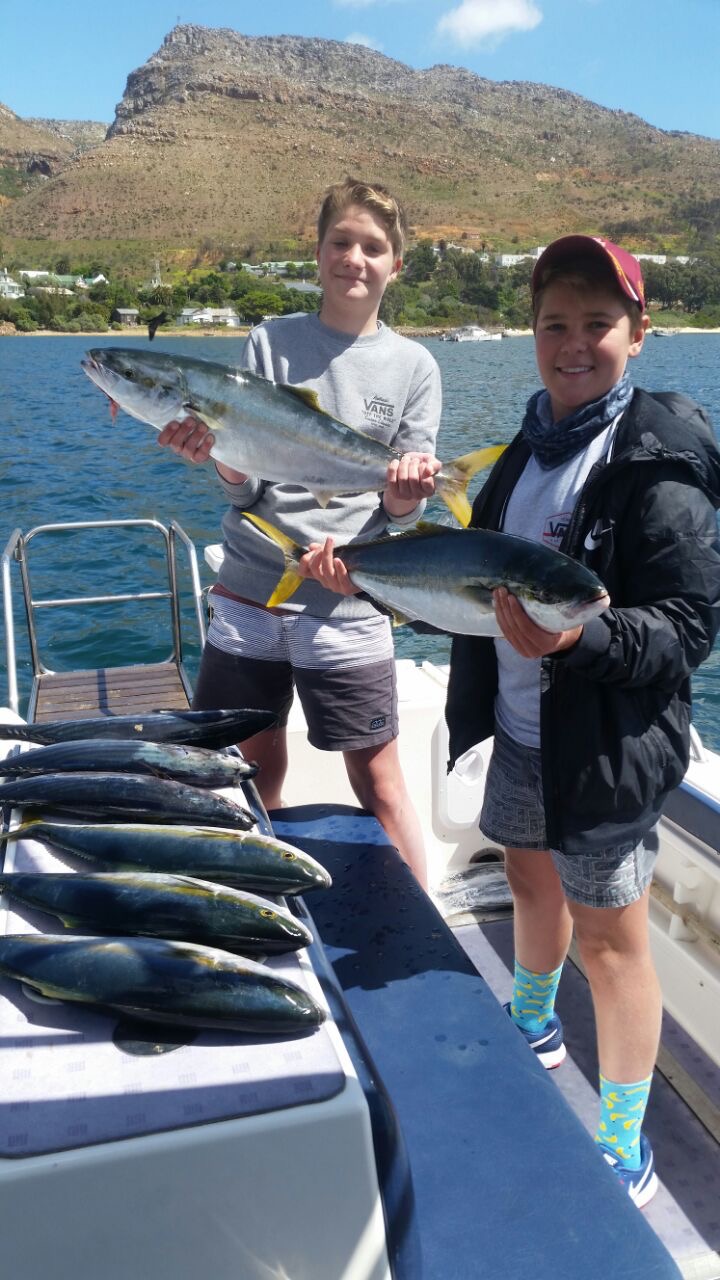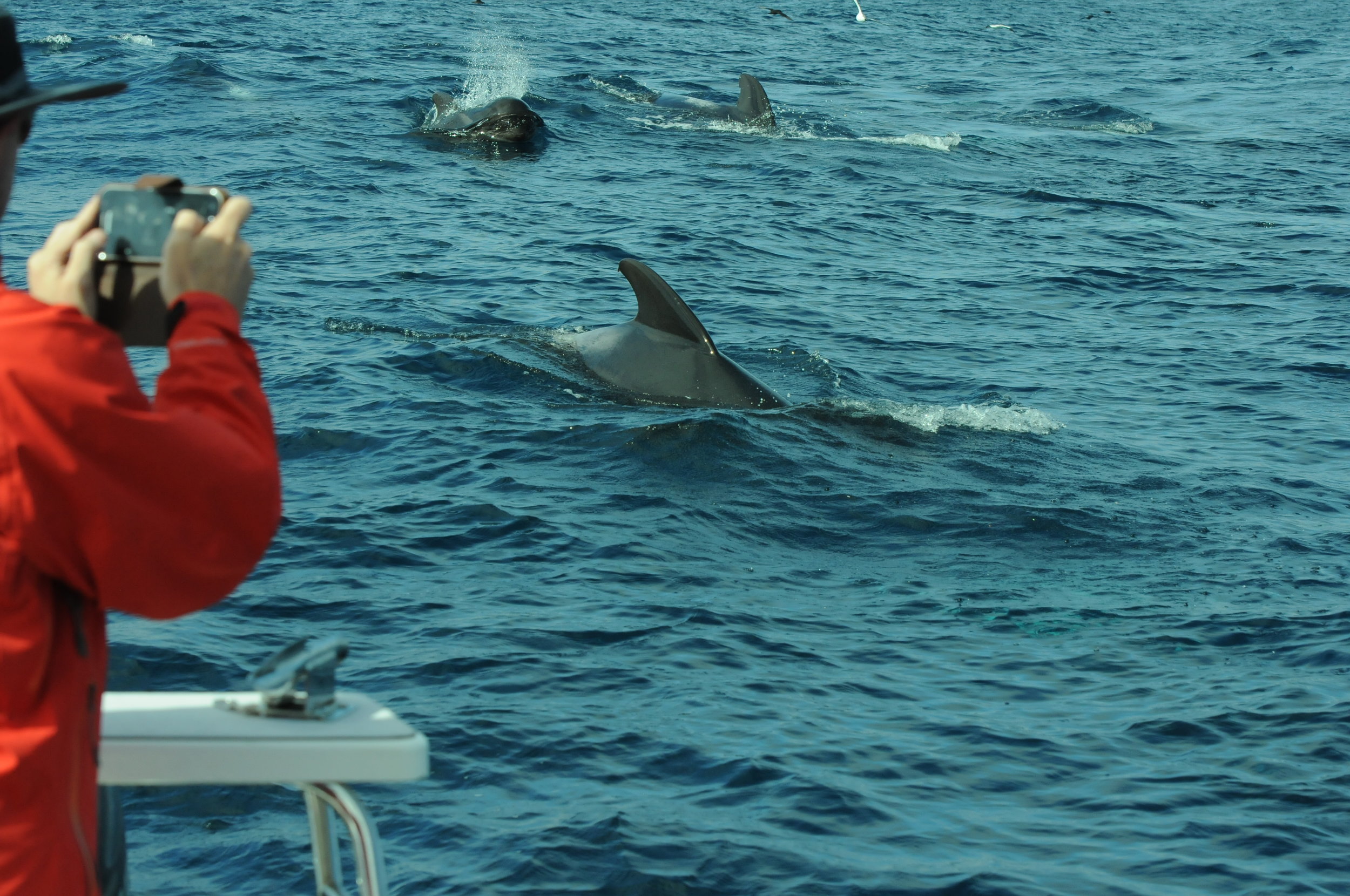Yellowtail fishing off Cape Point!
During our Inshore Fishing Trips to Cape Point we mainly target game fish, this includes the Yellowtail fish. Simonstown is a mere 30 minute boat ride from the famous fishing grounds of Cape Point - Our most popular method for catching Yellowtail is what we call "trolling" where we drag our lures behind the boat, while searching for shoals of bait fish on the surface. Sometimes they Yellowtail prefer it when we stop and cast spinners at them - This all depends on the day as each day stems different results from different methods!
Yellowtail fish:
The Cape Yellowtail (Giant Yellowtail) or Latin name "Seriola Lalandi" migrate towards the east coast of Southern Africa, following the annual Sardine Run. These fish are found in large shoals, in depths of up to 100 meters and feed off smaller fish like Sardines, Squid and Anchovy. Just like the Cape Snoek, Yellowtail is an important commercial line-fish species down here in the Western Cape. Females can reach up to 1.2 meters where males can reach up to 900 centimeters, but as it stands now there is no real legal size limit.
Finding the fish:
Yellowtail prefer the warmer areas of the cold Atlantic waters of the Cape - An ideal temperature would be between 16 to 19 degrees Celsius, although we have caught Yellowtail in waters as cold as 13/14 degrees Celsius! As Yellowtail is a highly migratory fish, they usually follow the warmer waters, which are usually a result of particular winds blowing. In our case the Southwesterly winds bring the warmer waters to our coast line and with that usually the fish follow!
We like to depart from Simonstown, False Bay as early as possible - Usually we ask our guests to be at the public jetty by first light, because In our experience, game fish generally like to feed best at first light (morning) or last light (evening)! The first thing we do when we arrive at our desired fishing spot is we start looking for certain birds, in this case "Common Terns" otherwise known to the local fisherman as "Sterretjies", which usually feed on the bait fish that are getting chased to the surface of the water by the schools of Yellowtail! Most of the fishing action takes place near these birds, so its vital that we keep an eye out for any bird activity during the course of our trips!
Be sure to drop us an email, share or leave a comment and we will gladly get back to you! :)
Yellowtail Fishing - Cape Point





